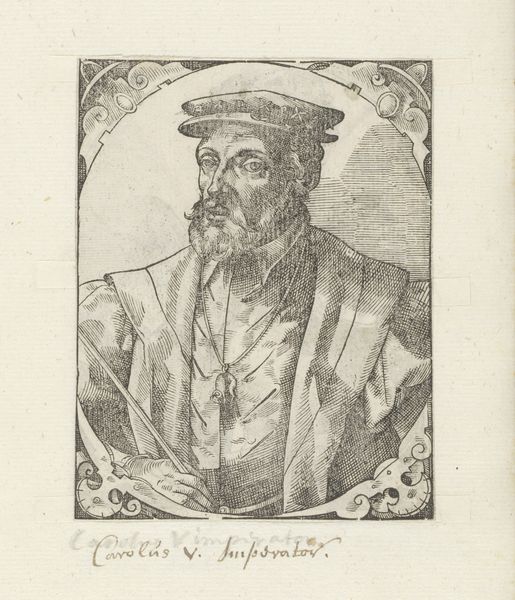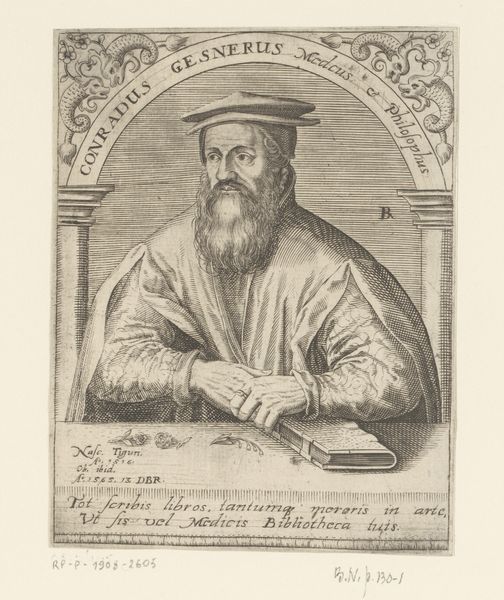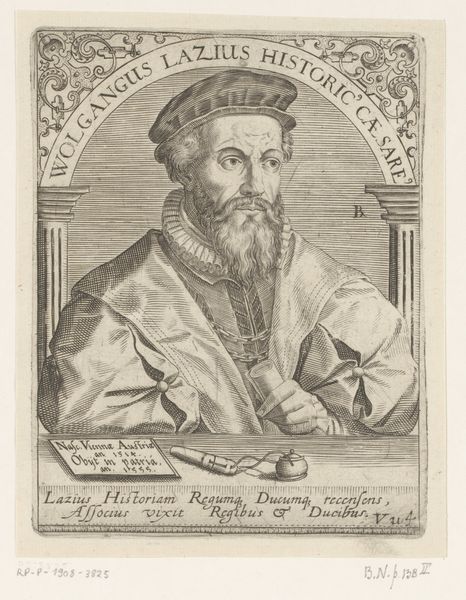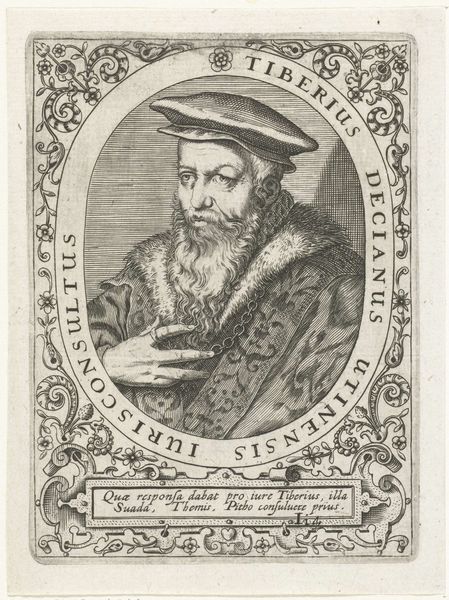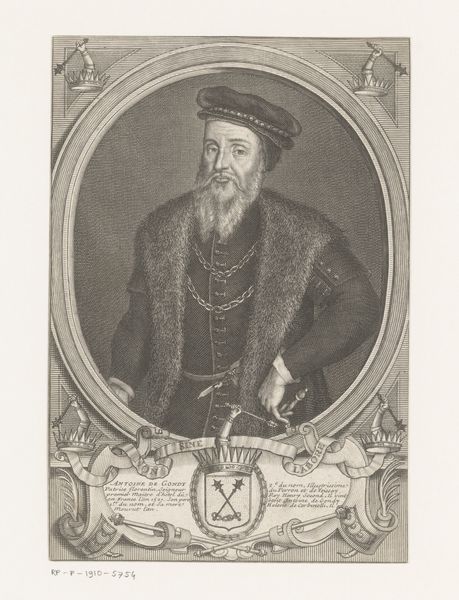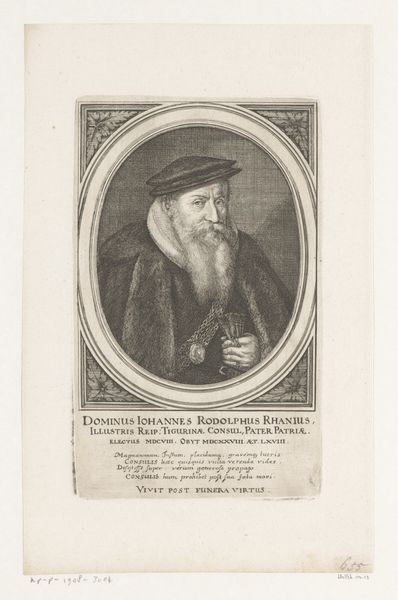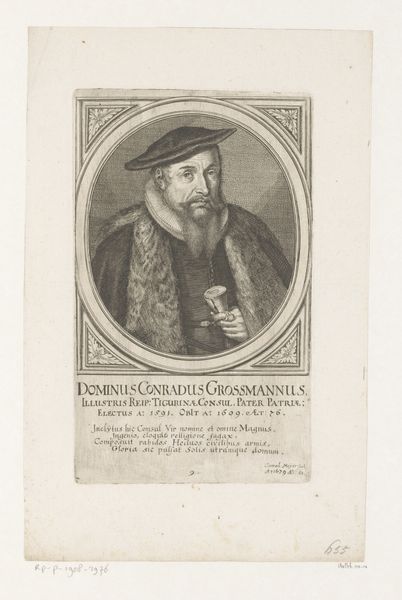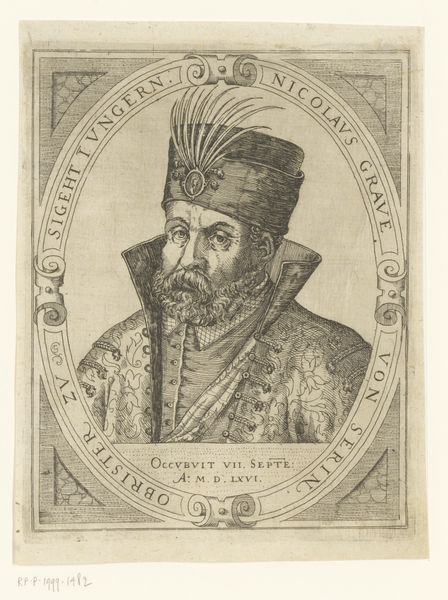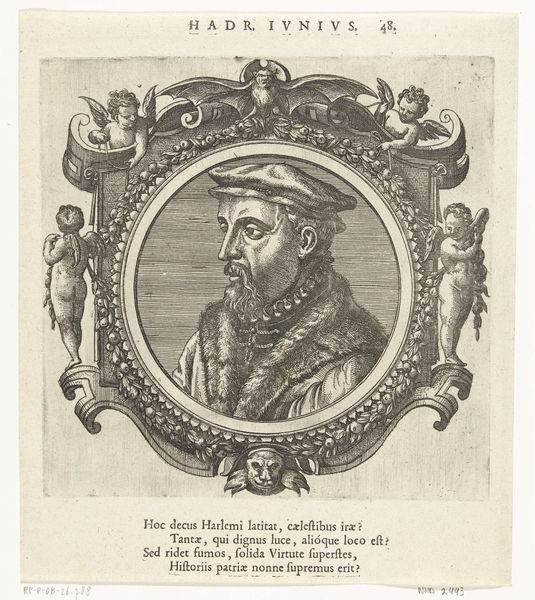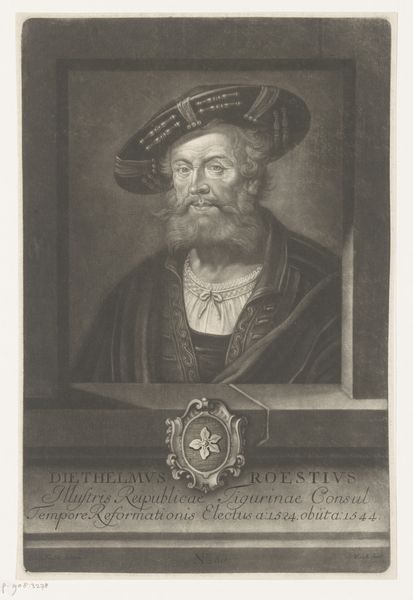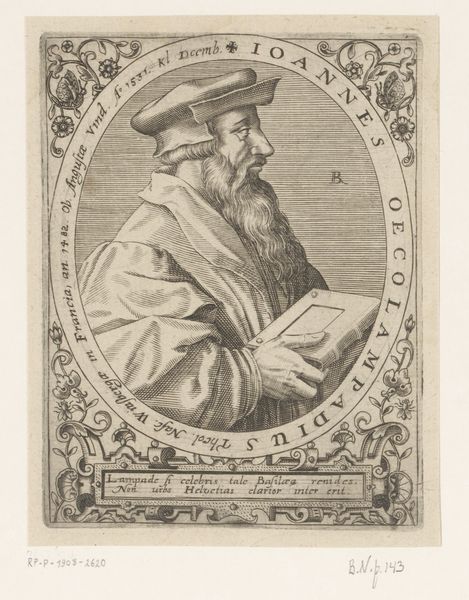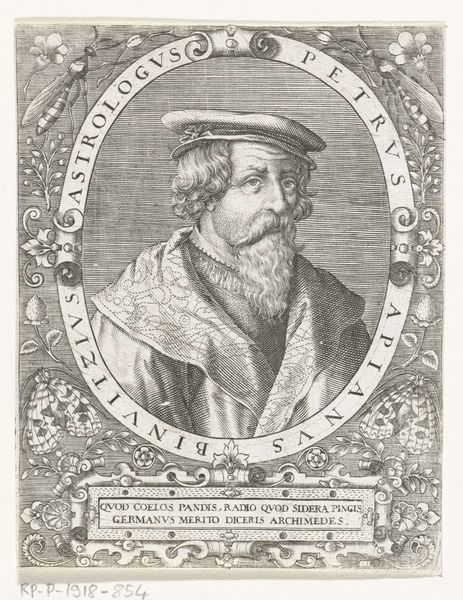
print, engraving
#
portrait
#
baroque
# print
#
history-painting
#
engraving
Dimensions: height 238 mm, width 159 mm
Copyright: Rijks Museum: Open Domain
Editor: This is a print titled "Portret van Rodolphus Schoenius" dating between 1665 and 1712, made by Johannes (II) Meyer. It's an engraving. I find the level of detail achieved through the engraving process pretty astounding, especially the way the artist captures the textures of the fabrics and the subject’s beard. How do you interpret this work, particularly considering it's a print and not a painting? Curator: I think it's vital to consider this engraving within the broader context of printmaking at the time. Engravings like these served a very specific social function. They were often commissioned and mass-produced, in a relative sense, to circulate images of power and status. Consider the material reality: the labor involved in creating the copperplate, the multiple impressions that could be made, and the dissemination of this image throughout society. Editor: So you're saying it's less about the individual artistry and more about the production and circulation of the image itself? Curator: Precisely. It shifts our focus from a purely aesthetic appreciation to a consideration of the economic and social factors at play. This image was not just viewed, it was consumed, exchanged, and used to reinforce social hierarchies. Think about who owned the presses, the role of guilds, and the access that people had to reproduce and own art. These material aspects directly impacted the content and the reception of the image. The latin writing on the bottom highlights these people of higher status and helps place their image within these elevated settings. Editor: I see. So, by focusing on the printmaking process and its social context, we can understand how this portrait functioned as a tool for constructing and maintaining power in society? Curator: Absolutely. We move beyond simply admiring the subject matter and engage with the image as a product of specific historical and economic forces, thereby deconstructing traditional notions of artistic genius and considering art's wider societal function. Editor: That’s really given me a new perspective. I tend to focus on the individual artwork itself but the context of how and why it was produced changes everything. Curator: Indeed. By examining the means of production, we gain a far richer understanding of art's role in shaping our world.
Comments
No comments
Be the first to comment and join the conversation on the ultimate creative platform.
